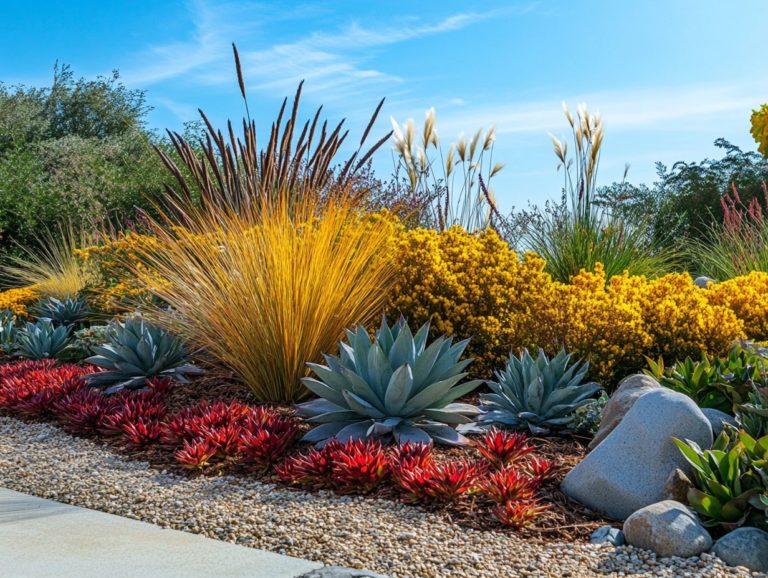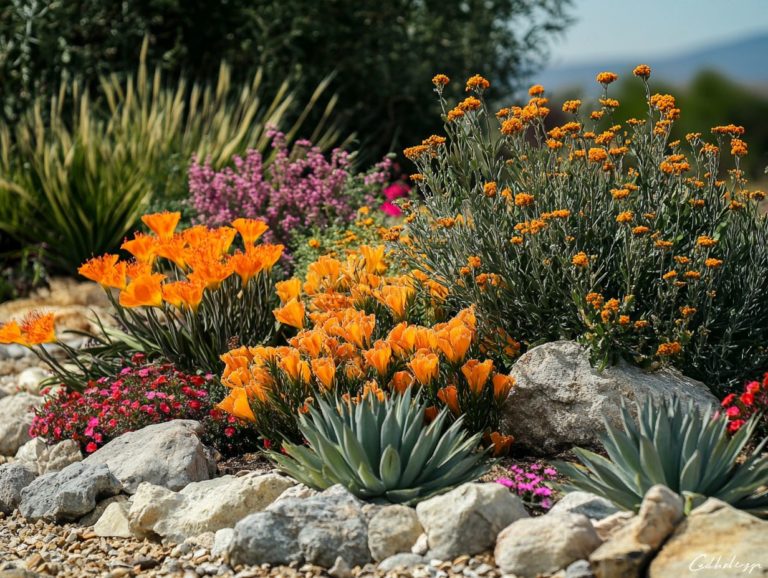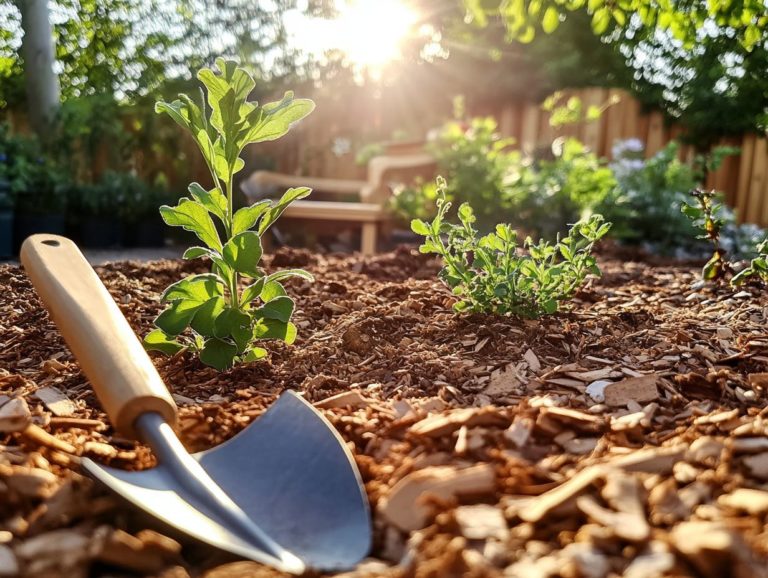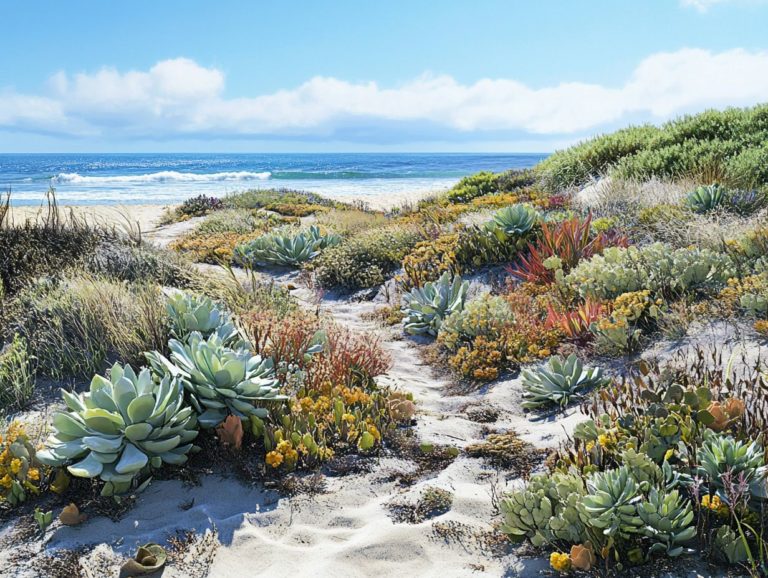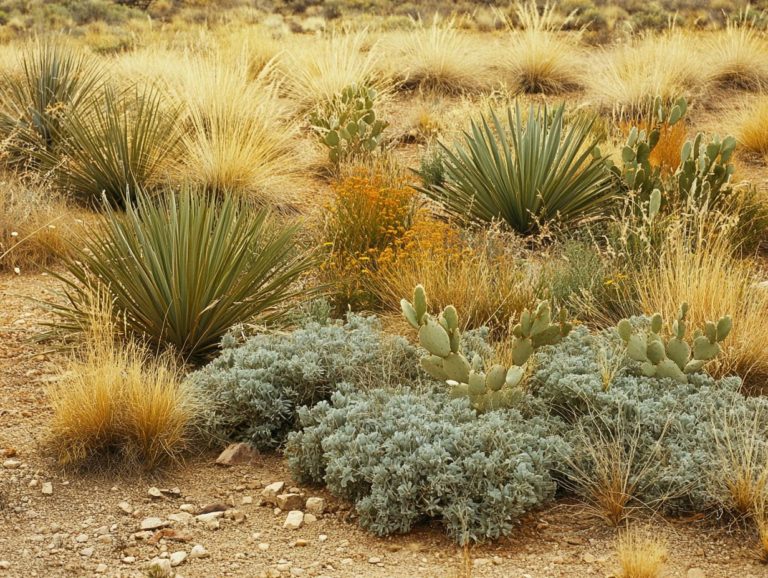What Resources Can Help Beginner Drought Gardeners?
Drought gardening isn t just a passing trend; it s a sustainable way to thrive in tough conditions.
As climate change worsens, learning how to cultivate a resilient garden is essential.
This guide covers everything you need to know about drought gardening. You ll learn to select the right plants and tools while using effective water conservation techniques.
Whether you re a seasoned gardener or just starting, you ll find resources and tips to transform your backyard into a thriving oasis.
Explore the benefits and strategies that will help you succeed in drought gardening.
Contents
- Key Takeaways:
- Understanding Drought Gardening
- Benefits of Drought Gardening
- Essential Tools for Drought Gardening
- Choosing Drought-Resistant Plants
- Water Conservation Techniques
- Resources for Beginner Drought Gardeners
- Frequently Asked Questions
- What resources can help beginner drought gardeners?
- Are there any online articles that can help beginner drought gardeners?
- Can gardening books be helpful for beginner drought gardeners?
- Are there any local gardening clubs that can assist beginner drought gardeners?
- What about workshops or classes specifically for drought gardening?
- Are there any government resources available for beginner drought gardeners?
Key Takeaways:
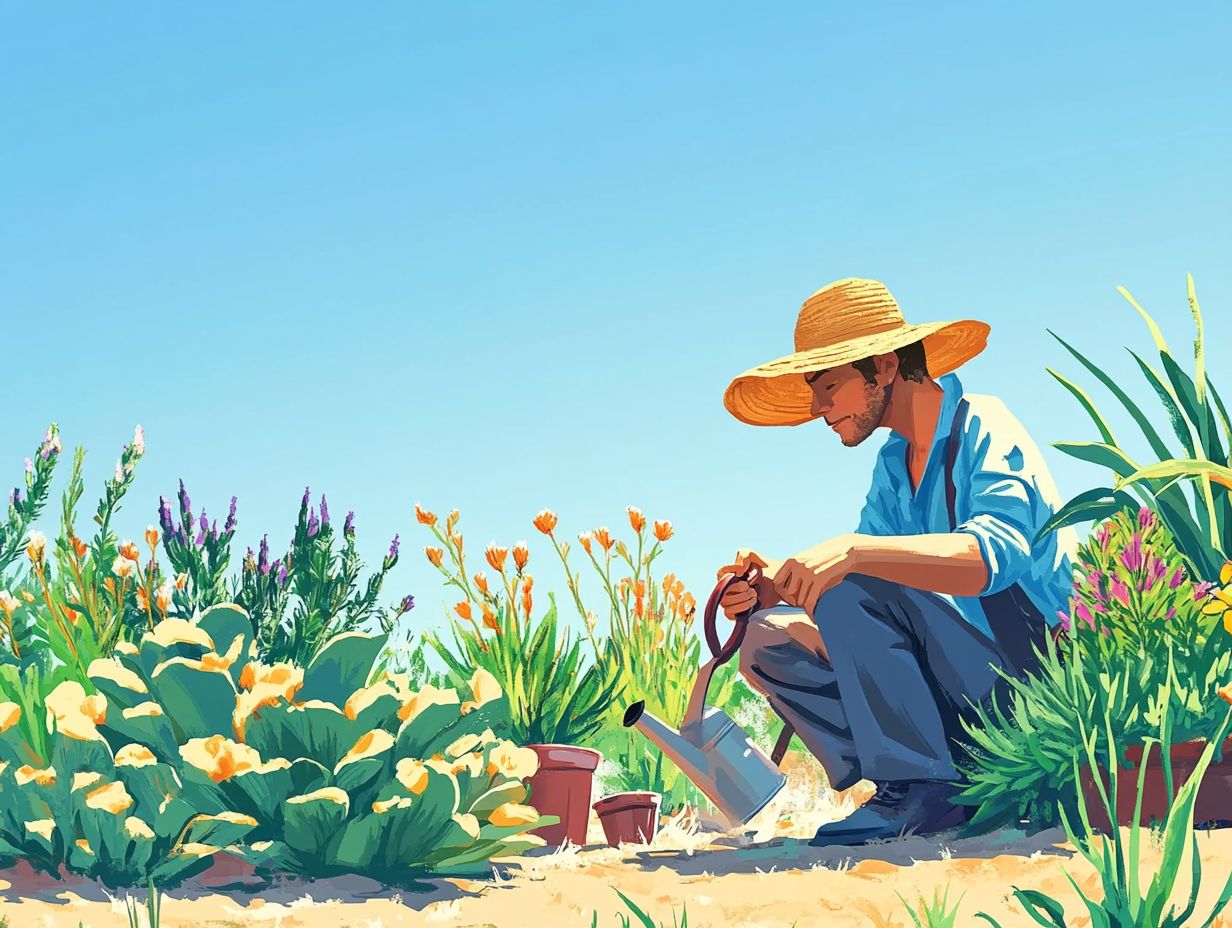
- Drought gardening uses techniques and plants that thrive in dry conditions.
- This gardening approach benefits the environment and your wallet by reducing water usage and maintenance costs.
- To start, get essential tools, choose drought-resistant plants, and learn water-saving techniques from reliable sources.
Understanding Drought Gardening
Drought gardening is a method designed to keep gardens lush even during water shortages. It focuses on choosing plants that need little water and using smart irrigation methods.
Effective soil preparation is key. Incorporating organic matter like compost enhances soil structure and helps retain nutrients, supporting plant health.
Using water-efficient techniques, such as drip irrigation or mulch, minimizes water loss and delivers moisture directly to plant roots.
Choosing native and drought-tolerant plants conserves water and supports local biodiversity. This approach fosters an ecosystem that thrives even in dry conditions and requires minimal upkeep.
Benefits of Drought Gardening
Drought gardening offers numerous advantages beyond merely surviving dry conditions. It promotes environmental sustainability, conserves important water resources, and enhances local ecosystems.
By adopting drought gardening techniques, you can create beautiful landscapes that also serve as crucial habitats for wildlife. This strategy significantly reduces the ecological footprint associated with traditional gardening.
Environmental and Personal Advantages
The environmental benefits of drought gardening are substantial. It leads to reduced water usage and improves habitats for local wildlife, both vital for maintaining biodiversity.
This sustainable method improves soil health by using native plants, which typically need less water and fertilizer. Consequently, you can reduce the need for chemical treatments that may harm local ecosystems.
Drought gardening also helps prevent soil erosion. Deep root systems stabilize the ground, preventing the loss of valuable topsoil.
Engaging in this method brings personal rewards as well. You ll enjoy lower maintenance costs and reduce your need for irrigation, freeing up valuable resources.
This not only enhances your experience in outdoor spaces but also deepens your connection with your environment while promoting a vibrant ecosystem.
Essential Tools for Drought Gardening
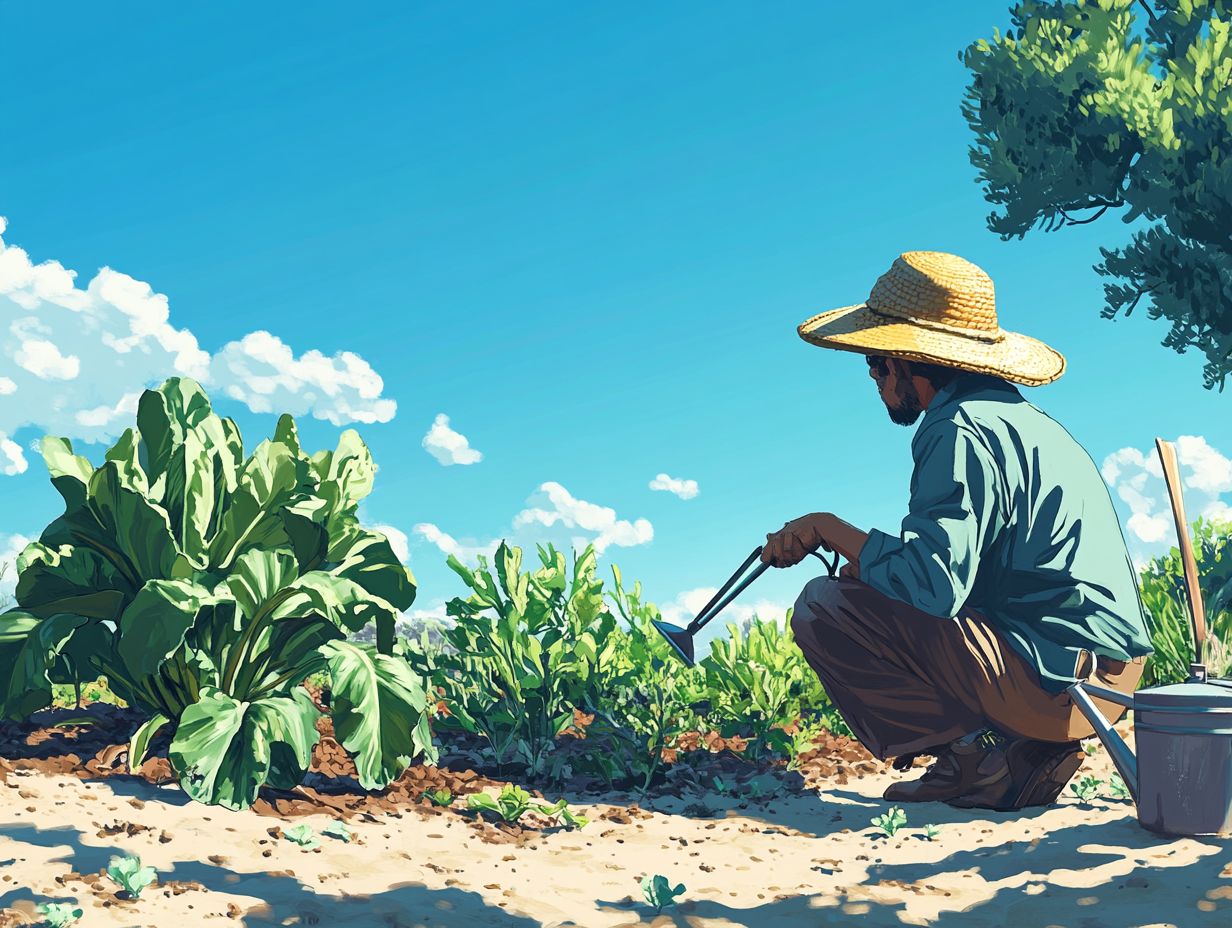
Using the right tools is vital for drought gardening. These tools improve watering methods and support soil health and plant growth.
Key items include irrigation systems like drip irrigation and soaker hoses. Adding mulch helps retain moisture, while compost enriches the soil.
Using these resources lets you create resilient landscapes. They can thrive even in tough water conditions.
Must-Have Equipment and Supplies
Gathering key equipment and supplies is vital for successful drought gardening. This will enhance your overall gardening experience.
A rain barrel captures rainwater for future use. This reduces your reliance on tap water.
Drip irrigation systems provide targeted watering. They deliver moisture directly to the roots, minimizing evaporation.
Don t overlook organic mulch it retains soil moisture, suppresses weeds, and enriches the soil as it breaks down.
When selecting supplies, consider your garden size, regional climate, and maintenance level. This way, you can optimize benefits and create a thriving drought-resistant garden.
Choosing Drought-Resistant Plants
Selecting the right plants is key to drought gardening. Choosing drought-resistant and native species boosts water conservation and garden resilience.
Consider native plants like Coneflowers, Black-eyed Susans, and Bee Balm; they suit your local climate and require less maintenance.
Integrating perennials and drought-tolerant species cultivates lush foliage and vibrant blooms while minimizing excessive watering.
Types of Plants to Consider
For your drought garden, mix native plants, perennials, and other drought-resistant species. These thrive in low-water conditions.
Incorporating succulents, lavender, and ornamental grasses transforms your landscape into a vibrant oasis. Succulents excel at moisture retention. Lavender adds fragrance and attracts pollinators, enhancing the ecosystem.
Ornamental grasses, such as feather reed grass, add texture and visual interest. Layer these plants for visual depth and coverage.
Strategically placing them in sunny areas will optimize their growth. This ensures a thriving landscape that stands the test of time and offers a sanctuary for wildlife.
Water Conservation Techniques
Effective water conservation techniques are vital for drought gardening. They help retain moisture and reduce water usage.
Consider deep watering to promote deep root growth. Applying mulch reduces evaporation these methods are important for healthy plants.
By adopting efficient irrigation systems and strategic watering practices, you can significantly enhance the sustainability of your garden.
Strategies for Saving Water in the Garden
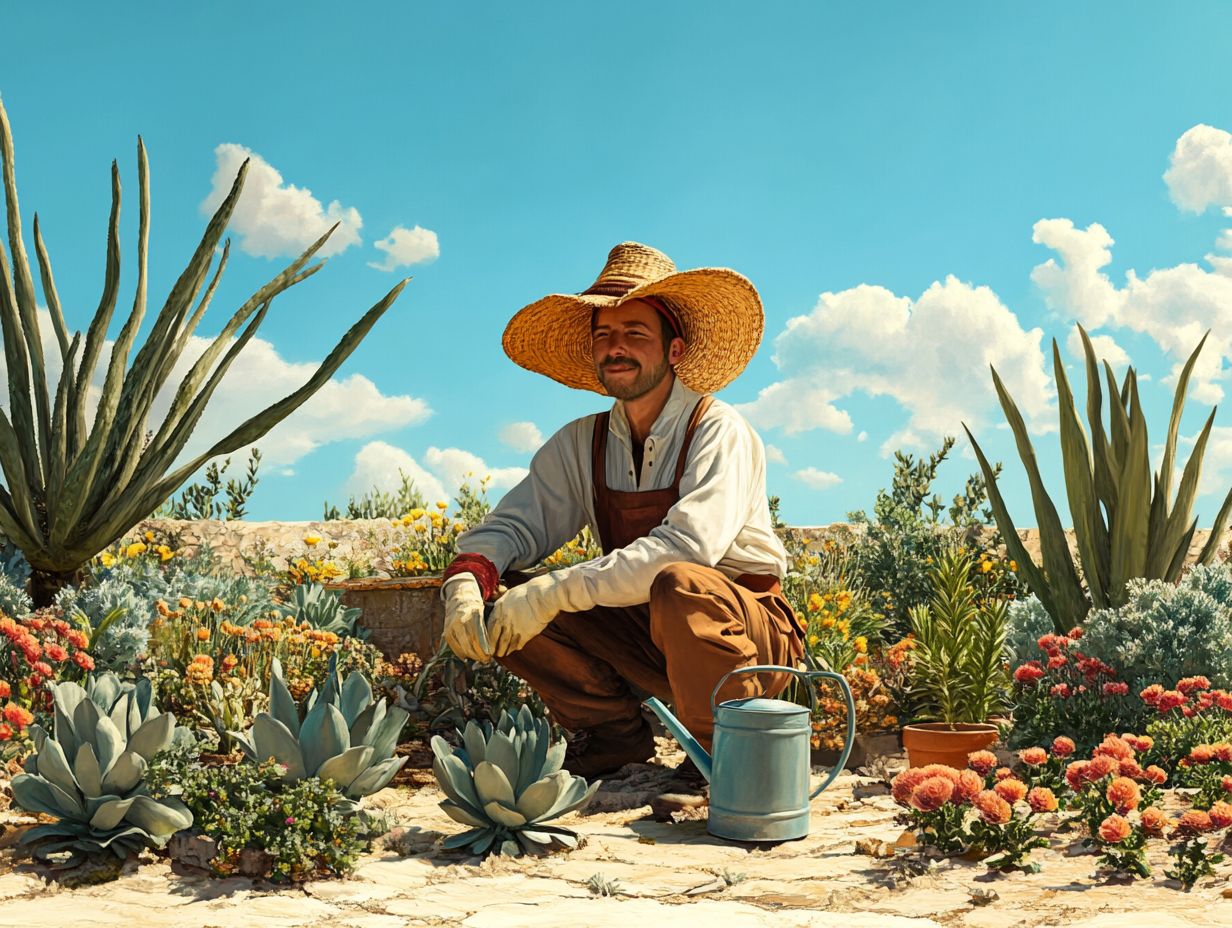
Implementing effective water-saving strategies in your garden can significantly reduce water wastage. These methods ensure your plants receive the moisture they need to thrive, particularly through deep watering and mulching.
One practical approach is to install rain barrels to collect and store runoff from your roof. This provides a free source of irrigation.
Adopting drip watering systems allows you to deliver water directly to the roots of plants, minimizing evaporation and runoff.
Choosing drought-tolerant plants is equally crucial. These resilient species flourish in low-water conditions and require less maintenance from you.
By blending these strategies, you conserve water and promote sustainability. This creates a more eco-friendly outdoor space that benefits the environment and enriches your plant life.
Resources for Beginner Drought Gardeners
For anyone new to drought gardening, a treasure trove of resources awaits to guide and inspire you on this sustainable gardening journey.
Informative websites, insightful books, and reputable organizations like UC Master Gardeners and Resource Central offer invaluable information. You’ll learn about selecting drought-resistant plants, mastering effective watering techniques, and ensuring comprehensive garden care.
Dive into these resources now and start creating a thriving drought garden that flourishes even in challenging environments.
Websites, Books, and Organizations to Help You Get Started
A wealth of websites and resources awaits you, designed to help novice gardeners navigate the intricacies of drought gardening.
For instance, the University of California’s Agriculture and Natural Resources website offers comprehensive guidance on selecting drought-resistant plants and effective water conservation techniques.
The Xerces Society provides abundant information on crafting pollinator-friendly gardens. These gardens thrive even in dry conditions, promoting biodiversity while conserving precious water resources.
You might also consider “The Drought-Resistant Garden” by Eric E. McHugh, an excellent reference brimming with practical tips on soil management and plant selection.
Local organizations, such as the Master Gardener program, frequently host workshops that focus on sustainable practices tailored for drought-prone areas. These provide invaluable hands-on experience.
Frequently Asked Questions
What resources can help beginner drought gardeners?
There are several resources that can help beginner drought gardeners, including online articles, gardening books, and essential tools for drought gardening from local gardening clubs.
Are there any online articles that can help beginner drought gardeners?

Yes, many online articles offer tips and advice for drought gardening, covering topics like watering techniques, plant selection, and soil preparation.
Can gardening books be helpful for beginner drought gardeners?
Absolutely! Gardening books provide in-depth information and guidance for drought gardening, including tips and tricks from experienced gardeners.
Are there any local gardening clubs that can assist beginner drought gardeners?
Yes, joining a local gardening club is a great resource for beginner drought gardeners. These clubs often have experienced members who can offer advice and support.
What about workshops or classes specifically for drought gardening?
Yes, many gardening centers and community organizations offer workshops and classes focused on drought gardening. These are great for beginners to learn practical skills and techniques.
Are there any government resources available for beginner drought gardeners?
Some government agencies, like the Department of Agriculture or local conservation organizations, may offer resources and information for drought gardening in your area. It’s worth checking with these organizations for tips and support.

